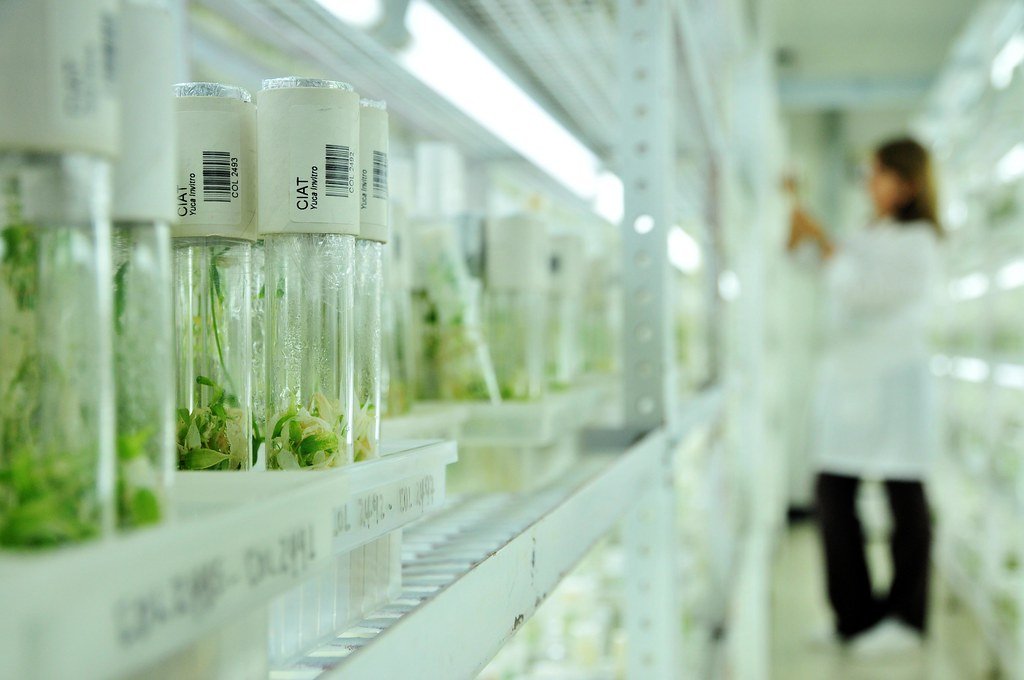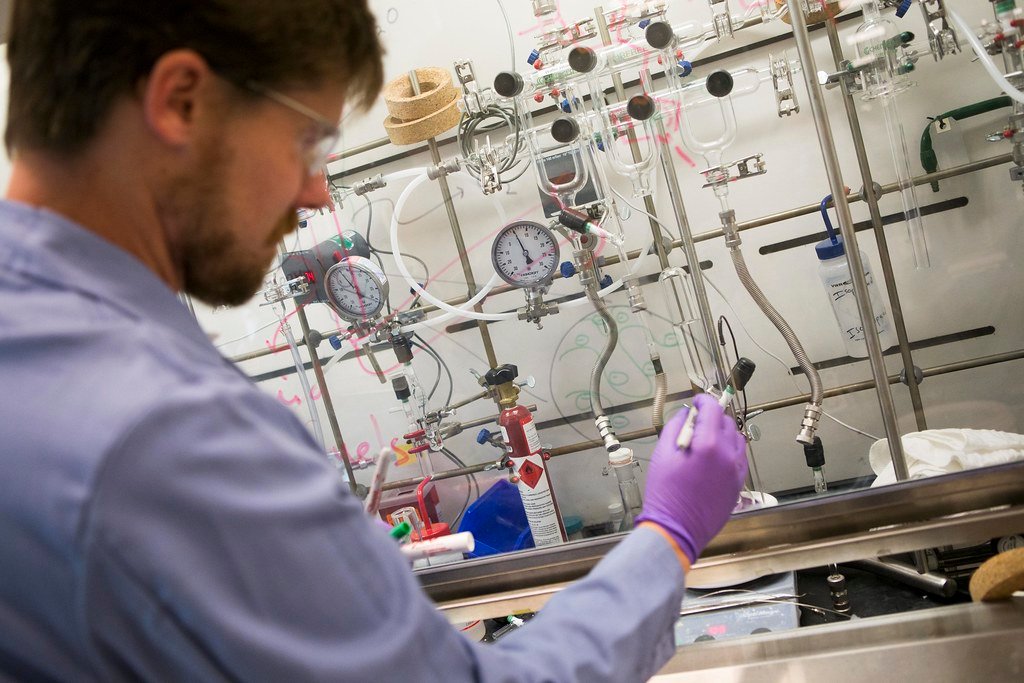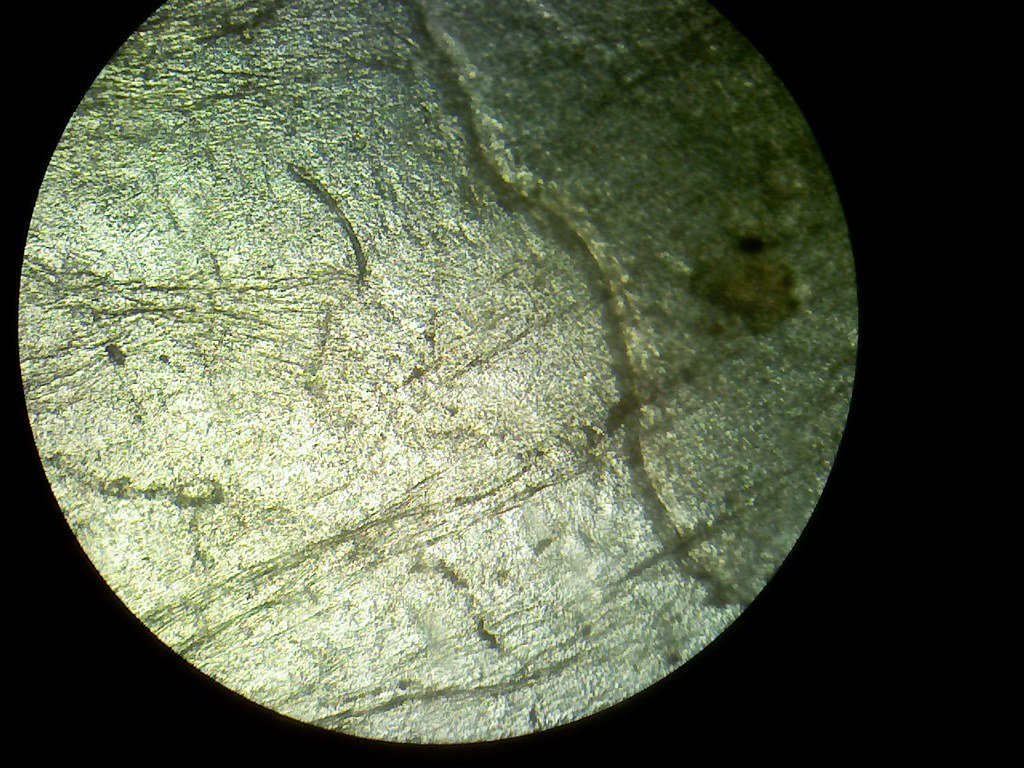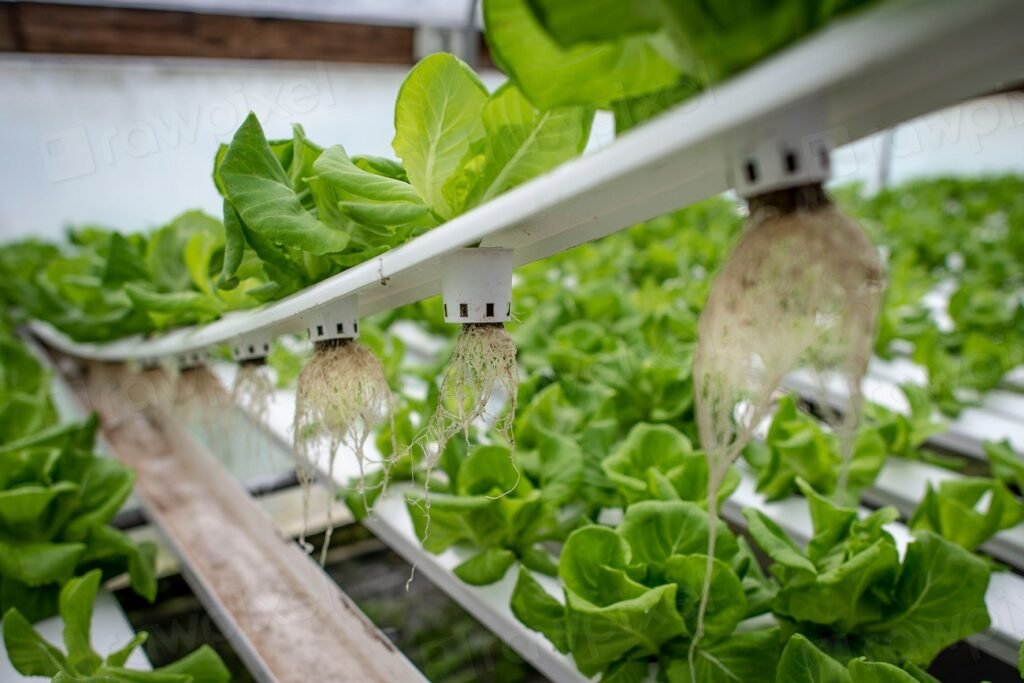Imagine descending into the deepest caves on Earth, where sunlight has never touched the ground, yet life somehow finds a way to flourish. The notion of growing plants without any light seems to defy everything we learned in elementary school about photosynthesis. Yet scientists around the world are quietly revolutionizing our understanding of plant biology, discovering that the impossible might actually be within reach. From underground laboratories to space stations orbiting Earth, researchers are unlocking secrets that could transform how we feed humanity in the most challenging environments imaginable.
The Photosynthesis Paradox That Started It All

Every schoolchild knows that plants need sunlight to survive, but what if this fundamental truth isn’t as absolute as we once believed? The discovery of life thriving around deep-sea hydrothermal vents completely shattered our assumptions about what organisms need to survive. These environments, perpetually shrouded in darkness and subjected to crushing pressures, host entire ecosystems that have never seen a ray of sunlight.
Scientists studying these mysterious underwater worlds found bacteria that could create energy through chemosynthesis rather than photosynthesis. Instead of using light to convert carbon dioxide into sugar, these remarkable organisms harness chemical energy from sulfur compounds and other minerals. This groundbreaking revelation opened up entirely new possibilities for understanding how life could exist in seemingly impossible conditions.
Nature’s Underground Rebels Breaking All the Rules

Deep beneath our feet, in caves that stretch for miles without a single photon of natural light, certain plants have evolved extraordinary survival strategies. Cave-dwelling ferns and mosses have developed the ability to survive on minimal light sources, sometimes thriving near cave entrances where only the faintest traces of sunlight penetrate. These resilient plants have adapted their chlorophyll production and metabolic processes to function with incredibly low light levels.
Some cave ecosystems support plant life through indirect energy sources, such as nutrients carried by underground water systems or organic matter deposited by animals. These environments demonstrate that plants can survive, and even thrive, in conditions that would seem absolutely impossible for traditional agriculture. The adaptations these plants have developed over millennia provide crucial insights for scientists attempting to grow crops in artificial darkness.
The Science Behind Energy Without Sunlight

Breaking free from sunlight dependency requires understanding alternative energy pathways that plants can potentially exploit. Chemosynthetic processes, while primarily found in bacteria and certain microorganisms, represent a fascinating avenue for plant modification. Scientists are exploring whether plant cells could be engineered to incorporate similar energy-producing mechanisms that don’t rely on photons.
Another promising approach involves creating artificial energy sources that plants can directly absorb and convert into usable chemical energy. Researchers have experimented with electrical stimulation, chemical nutrient solutions, and even engineered symbiotic relationships with energy-producing microorganisms. These methods could potentially bypass the need for photosynthesis entirely, allowing plants to grow in complete darkness while maintaining healthy development and nutritional value.
Artificial Light Solutions That Mimic the Sun

While growing plants in total darkness remains a significant challenge, artificial lighting systems have made remarkable strides in recent years. LED technology has revolutionized indoor farming by providing specific light wavelengths that plants need most efficiently. These systems can be precisely controlled to deliver optimal growing conditions while using significantly less energy than traditional lighting methods.
Modern hydroponic and aeroponic facilities often operate in windowless environments, relying entirely on artificial light sources to sustain massive crop production. Some of these facilities achieve yields that far exceed traditional outdoor farming, demonstrating that controlled artificial environments can actually surpass natural growing conditions. The key lies in understanding exactly which wavelengths plants require and delivering them with maximum efficiency.
Genetic Engineering Opens New Possibilities

The frontier of genetic modification presents perhaps the most exciting opportunities for darkness-adapted plant growth. Scientists are working to engineer plants that can utilize alternative energy sources or function with dramatically reduced light requirements. Some research focuses on incorporating genes from organisms that naturally thrive in dark environments, potentially creating hybrid plants with unprecedented adaptability.
Gene editing technologies like CRISPR allow researchers to precisely modify plant DNA to enhance their ability to absorb nutrients directly from soil or water sources. These modifications could theoretically eliminate or significantly reduce the need for photosynthesis, enabling plants to derive energy from chemical processes rather than light-dependent reactions. Such breakthroughs could revolutionize agriculture in underground facilities, space exploration, and regions with limited sunlight.
Mushrooms and Fungi Leading by Example

Fungi have mastered the art of thriving without sunlight for millions of years, offering valuable lessons for plant cultivation in darkness. These remarkable organisms break down organic matter to extract energy and nutrients, completely bypassing the need for photosynthesis. Commercial mushroom farming already operates successfully in completely dark environments, producing nutritious food crops without any natural light.
The symbiotic relationships between fungi and plant roots, known as mycorrhizal networks, suggest possibilities for enhancing plant survival in low-light conditions. Some researchers are exploring whether plants could be engineered to form more extensive partnerships with fungi, potentially allowing them to access alternative energy sources through these biological networks. This approach could create self-sustaining plant systems that thrive in darkness while maintaining nutritional quality.
Deep-Sea Agriculture Concepts

Underwater farming represents one of the most ambitious applications of darkness-adapted agriculture. Researchers have proposed creating sealed underwater growing facilities that could produce crops on the ocean floor, completely isolated from surface light sources. These systems would rely on nutrient-rich seawater and potentially geothermal energy to sustain plant growth.
Pilot projects have already demonstrated the feasibility of growing certain crops underwater using sealed transparent containers. While these experiments still rely on natural sunlight filtering through water, they represent important steps toward developing fully independent underwater agriculture systems. Such facilities could provide food security for underwater habitats, offshore communities, and even submarine crews on extended missions.
Space Agriculture and the Ultimate Challenge

Growing plants in the vacuum of space presents the ultimate test for darkness-adapted agriculture. Space missions to Mars or other planets will require sustainable food production systems that function without natural sunlight and in extremely hostile environments. NASA and other space agencies are investing heavily in research to develop completely self-contained growing systems for long-duration space missions.
Current space agriculture experiments aboard the International Space Station rely on LED lighting systems, but future missions to distant planets may require plants that can survive with minimal or no artificial lighting. The energy requirements for powering grow lights during multi-year space missions could be prohibitive, making truly darkness-adapted plants essential for human survival in deep space exploration.
Underground Cities and Bunker Farming

The concept of underground cities and survival bunkers has gained significant attention in recent years, driving interest in subterranean agriculture systems. These facilities must be completely self-sufficient, producing food without access to natural sunlight or traditional farming methods. Underground farming systems offer protection from natural disasters, climate change, and other surface-level threats while maintaining food security.
Several countries are already experimenting with large-scale underground agricultural facilities that operate independently of surface conditions. These systems typically rely on artificial lighting, but researchers are working toward developing plants that could thrive in such environments with minimal energy input. Success in this area could provide crucial food security options for populations facing environmental challenges or living in underground facilities.
Energy-Efficient Solutions for Dark Growing

The energy requirements for artificial lighting systems represent a major obstacle in darkness-adapted agriculture. Current LED technology, while highly efficient, still requires substantial electrical power to sustain large-scale crop production. Researchers are exploring alternative energy sources, including geothermal power, nuclear energy, and even waste heat recovery systems to make dark agriculture economically viable.
Some innovative approaches focus on capturing and concentrating minimal light sources to maximize their effectiveness. Mirror systems, fiber optic light guides, and specialized reflective surfaces can potentially amplify small amounts of available light to levels sufficient for plant growth. These systems could make darkness-adapted agriculture practical in environments where minimal light sources exist, such as polar regions during winter months.
Synthetic Biology and Artificial Photosynthesis

Scientists are working to create entirely artificial photosynthesis systems that could power plant growth without natural light. These synthetic biological systems would use chemical reactions to produce the same energy outputs as traditional photosynthesis, but without requiring photons from sunlight. Such technology could be integrated directly into plant cells or provided as external energy sources for modified crops.
Artificial chlorophyll and synthetic energy conversion systems represent cutting-edge research areas that could revolutionize plant biology. These systems aim to create more efficient energy conversion processes than natural photosynthesis, potentially allowing plants to grow faster and produce higher yields even in complete darkness. The development of such technology could fundamentally change our understanding of what plants need to survive and thrive.
Microorganism Partnerships for Plant Survival

The natural world provides numerous examples of beneficial partnerships between plants and microorganisms that could be exploited for darkness-adapted agriculture. Certain bacteria and other microorganisms can provide plants with essential nutrients and energy compounds that reduce their dependence on photosynthesis. These symbiotic relationships could be enhanced or artificially created to support plant growth in dark environments.
Researchers are developing specialized bacterial cultures that can break down organic waste materials and convert them into forms that plants can directly absorb for energy. These biological systems create closed-loop ecosystems where waste products become food sources, enabling sustainable plant growth without external light inputs. Such approaches could make long-term space missions or underground habitats completely self-sufficient in food production.
Chemical Nutrition Systems

Advanced chemical nutrition systems offer another pathway toward darkness-adapted plant growth. These systems provide plants with pre-processed energy compounds that bypass the need for photosynthesis entirely. By supplying plants with glucose, amino acids, and other essential molecules directly through their root systems, researchers can maintain healthy plant growth without any light source.
Hydroponic and aeroponic systems already demonstrate the effectiveness of chemical nutrition approaches, though they typically still require artificial lighting. Scientists are refining these systems to provide increasingly complete nutritional support that could potentially eliminate light requirements altogether. The key challenge lies in developing cost-effective methods for producing the necessary chemical compounds on a large scale.
Temperature and Humidity Control in Dark Environments

Growing plants in darkness requires precise control of environmental conditions to compensate for the absence of natural regulatory mechanisms. Temperature, humidity, air circulation, and atmospheric composition must be carefully managed to create optimal growing conditions. These environmental controls become even more critical when plants cannot rely on photosynthesis to regulate their internal processes.
Advanced climate control systems used in current indoor farming operations provide valuable insights for darkness-adapted agriculture. These systems can maintain ideal growing conditions regardless of external weather or environmental factors, creating stable microclimates that support healthy plant development. The integration of sensors, automated controls, and artificial intelligence allows for precise management of growing environments that could surpass natural conditions in many ways.
Economic Implications of Dark Agriculture

The economic potential of darkness-adapted agriculture extends far beyond novelty applications, representing a fundamental shift in how we approach food production. Underground and indoor farming facilities could provide year-round crop production in urban areas, reducing transportation costs and environmental impacts associated with traditional agriculture. These systems offer independence from weather patterns, seasonal variations, and climate change effects that increasingly threaten conventional farming.
Commercial applications of dark agriculture technology could revolutionize food security in regions with limited arable land or harsh growing conditions. Arctic communities, desert regions, and densely populated urban areas could benefit enormously from locally produced food that doesn’t depend on favorable weather or extensive land resources. The initial investment costs for such systems continue to decrease as technology advances and economies of scale develop.
Challenges and Limitations We Must Overcome

Despite promising developments in darkness-adapted agriculture, significant challenges remain before these technologies become widely practical. Energy requirements for artificial systems often exceed the caloric value of the crops produced, creating economic and environmental sustainability concerns. The complexity of managing completely artificial growing environments requires sophisticated technology and expertise that may not be readily available in all applications.
Nutritional quality represents another critical concern, as plants grown without natural sunlight may lack certain compounds that develop through photosynthetic processes. Researchers must ensure that darkness-adapted crops maintain the same nutritional value and taste qualities as traditionally grown foods. Long-term health effects of consuming foods produced entirely without natural light remain largely unknown and require extensive study before widespread adoption.
Current Research Projects and Breakthroughs

Universities and research institutions worldwide are actively pursuing darkness-adapted agriculture projects with increasingly promising results. Recent breakthroughs include successful cultivation of leafy greens using only chemical nutrition sources and the development of plant varieties with dramatically reduced light requirements. Some facilities have achieved complete crop cycles without any natural light input, demonstrating the feasibility of the concept.
International collaboration on space agriculture research has accelerated progress in darkness-adapted growing systems. Joint projects between space agencies, agricultural universities, and private companies are pushing the boundaries of what’s possible in controlled environment agriculture. These efforts combine expertise from multiple disciplines to address the complex challenges of sustainable food production in extreme environments.
Future Possibilities and Timeline Predictions

The timeline for practical darkness-adapted agriculture depends largely on continued technological advances and economic incentives driving development. Experts predict that commercially viable systems for specific applications could emerge within the next decade, particularly for high-value crops and specialized environments. Widespread adoption for general food production may require several more decades of research and development.
Future possibilities include entire underground cities sustained by darkness-adapted agriculture, space colonies producing their own food supplies, and urban farms operating in windowless buildings throughout cities worldwide. The convergence of genetic engineering, artificial intelligence, and advanced materials science could accelerate development beyond current predictions, potentially making darkness-adapted agriculture commonplace sooner than anticipated.
The Revolutionary Impact on Global Food Systems

Success in developing practical darkness-adapted agriculture could fundamentally transform global food systems and reshape human civilization’s relationship with the environment. Such technology would enable food production in previously impossible locations, from deep ocean facilities to extraterrestrial colonies. The implications extend beyond mere food security to include environmental protection, resource conservation, and human expansion into new frontiers.
Urban food production could become completely decentralized, with every building potentially hosting its own food production systems. This transformation would reduce transportation costs, minimize food waste, and provide fresh produce regardless of geographic location or climate conditions. The ability to grow food anywhere could eliminate hunger in remote regions and provide unprecedented food security for the global population.
The quest to grow plants in total darkness represents one of the most fascinating frontiers in modern science, challenging our fundamental understanding of life itself. While we haven’t yet achieved true darkness-adapted agriculture on a commercial scale, the rapid pace of research and technological development suggests that this seemingly impossible goal may be closer than we imagine. From genetic engineering to synthetic biology, from underground farms to space agriculture, scientists are approaching this challenge from multiple angles with increasingly promising results.
The implications of success extend far beyond scientific curiosity, potentially revolutionizing how humanity produces food, explores space, and adapts to environmental challenges. Whether through modified plants that thrive without sunlight or sophisticated artificial systems that replace natural processes entirely, the future of agriculture may look nothing like the sun-drenched fields of today. Could we really be just decades away from farms that operate in perpetual darkness, feeding populations in the most unlikely places imaginable?



